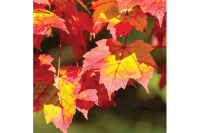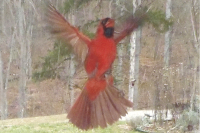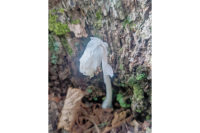‘Galaxy of Stars’ now ‘WCU PRESENTS’
The “WCU PRESENTS” performance series, previously known as “Galaxy of Stars” brings professional artists from around the world to the Bardo Arts Center performance hall. Season Subscriptions and Multi-Pass Ticket Packs are now available to the public; single tickets will become available Aug. 1.
Onstage at WCU
 Galaxy of Stars offers a variety of entertainment
Galaxy of Stars offers a variety of entertainment
A tribute to a comedic icon, a holiday show featuring the “Redneck Tenors” and a performance by an American country-pop superstar top the lineup for the 2015-16 Galaxy of Stars Series at Western Carolina University.
Must-see in Cullowhee
 From blockbuster Broadway musicals to the obscure art of throat singing to politically-charged documentaries on Iranian oppression, Western Carolina University is filling the stage and screen with an impressive line-up of shows, acts and film screenings over the coming year.
From blockbuster Broadway musicals to the obscure art of throat singing to politically-charged documentaries on Iranian oppression, Western Carolina University is filling the stage and screen with an impressive line-up of shows, acts and film screenings over the coming year.
Entertaining, thought-provoking and cultural enlightening, WCU has three different performance series plus a film series. Act now to get season tickets to any of the series, or clip and save the line-up for upcoming shows you won’t want to miss.
Jungle king swings into WCU
 A cold wind howls through the campus of Western Carolina University as the screams of a young woman echo from a nearby building.
A cold wind howls through the campus of Western Carolina University as the screams of a young woman echo from a nearby building.
The voice is Stefani Cronley and her attackers are a gang of apes.
Sing-A-Long-A-Sound of Music
 By Shannan Mashburn • SMN Intern
By Shannan Mashburn • SMN Intern
Singing, lonely goat herders, nuns, and Julie Andrews are just a few things Western Carolina University’s Bardo Arts Center will be prepared for on Father’s Day with the “Sound of Music” sing-a-long event.
At 3 p.m. June 17, participants of the sing-a-long will watch “The Sound of Music” with the subtitles so they can sing along with their favorite tunes. They’ll also receive a “magic moments pack” that contains all of the props participants will need to enjoy the event. Everyone is encouraged to design his or her own unique costumes for a parade that will take place after the screening of the timeless movie.
App brings art to the people – and their smart phones
For those looking to learn more about the sculptures that dot the campus at Western Carolina University, well, there’s an app for that. Or at least there will be soon, thanks to a collaboration between the school’s Fine Arts Museum and Computer Information Systems students in the College of Business.
As a part of a class, now one of the major’s capstone courses, students are building a mobile application that will guide users on an audio-visual tour of the pieces that comprise the school’s public art program.
It’s an idea that really excites the Denise Drury. She’s the museum’s interim director, and she’s stoked about bringing art to the public.
“I’ve always been really passionate about public art because I feel like it’s kind-of a gateway,” said Drury. “A lot of people get into art by seeing it outside.”
She hopes that adding an app to the school’s public-art approach, it’ll entice a whole new demographic into the museum and into interaction with the arts.
The school has run a public art program in some incarnation since the 80s, said Drury, ranging from specifically purchased pieces that find their permanent homes somewhere on campus to regional art competitions whose winners display their creations temporarily at the university.
Currently, the school has nine outdoor sculptures gracing the Cullowhee campus, as well as an indoor, two-dimensional sculpture that hangs permanently in the school’s Belk building.
Included in that number are the winners from a contest last fall that stand sentry in the courtyard outside the school’s Fine and Performing Arts Center.
The goal of the proposed app is to curate these works, giving students, faculty and visitors an interactive arts experience on their own terms and timeline.
Currently, Drury said they’re working on two different content styles – one a richer, more descriptive tour that would include a detailed explanation of the artwork, background information on the artist and their creation, and possibly even commentary from the artists themselves.
The idea is to pack the app with information for off-site users who aren’t standing in front of the works.
“We feel like this is a very good program for people who might not be able to make it to the campus,” said Drury.
But they’re hoping to build in some unique features for on-campus art lovers, too, including a GPS locater that will guide users from one sculpture to the next, highlighting their distance from the various public art pieces.
“It’s just an added incentive to get people out and walking on campus, people who visit Western for football games and are tailgating, people who are coming for a performance and get here a little early,” said Drury, as well as the thousands of students and faculty who pass the sculptures every day.
Associate Professor Dan Clapper is one of them. He teaches the app-writing class, only in its second semester, and he, too, thinks the possibility of new ways to interface with art is an intriguing.
“As a faculty member here, I drive by a lot of those sculptures everyday and I’m curious about them,” said Clapper.
His student team who are working with Drury and her staff to create the app are, said Clapper, treading new territory in how to convey that information, though.
“It’s all kind of new for us, I think it’s new for people in general,” said Clapper. “We don’t really know how long people want to listen to an audio clip when they’re standing in front of a sculpture.”
And that’s where testing comes into play. Drury and her staff provide the content for the app, while the students find a way to make that content work. But there are a multitude of options for introducing users to art. Should there be detailed descriptions? A bank of photos? Artist profiles? Art history information? Will people want to stand in front of a sculpture listening for 30, 60, 90 seconds?
These are all answers that student testing will hopefully answer. And at the end of the process, the result will not only be a great app, but a cadre of students who have hands-on experience in a marketable arena that everyone from museums to fast-food restaurants want to get in on.
From the educational side, Drury said she’s thrilled to be embracing technology and bringing learning to people on their terms.
“It’s something that a lot of our colleagues are doing in the arts, so we feel like it’s a natural progression for us,” said Drury. “A lot more people are buying smart phones and using them as learning tools.”
From a technological perspective, the app-writing class is pretty cutting edge, and Clapper sees it as an exciting technology that’s only going to get bigger.
“I think it’s a technology that’s really just starting to take off, and as more and more people start to have smart phones, we‘ll see a lot more applications,” said Clapper.
This semester, the class is also working on an app for the Catawba County government, the Mountain Heritage Center and a continuing project that will map out a tour of Cherokee history.
The Fine Art Museum app should be available by early summer.
Second City brings new comedy show to WCU
Second City, the world-famous improvisational comedy troupe, is bringing its show ‘Fair and Unbalanced’ to Western Carolina University’s Fine and Performing Arts Center at 7:30 p.m. Thursday, Feb. 17.
Originally formed in Chicago in 1959, Second City has since built its reputation as a major starting point for aspiring comedians, actors, writers and directors.
Tickets are $10 for the general public and $5 for WCU students. The show is intended for audience members 18 or older.
828.227.2479
Martin DeWitt, founding curator and director of WCU art museum, to retire
Martin DeWitt, founding director and curator of the Fine Art Museum at Western Carolina University, has announced his retirement.
“I think the timing is right for changes,” said DeWitt, whose career spans more than 30 years in museum administration. He will end his work at the museum in December.
“Martin has been an outstanding founding director of the Fine Art Museum,” said Robert Kehrberg, dean of WCU’s College of Fine and Performing Arts. Kehrberg praised DeWitt for his strength in defining a vision for the museum and cultivating it as a cultural destination. He also credited DeWitt with strengthening the university’s ties with the Eastern Band of Cherokee Indians.
DeWitt joined the university in 2003, with the museum opening in 2005 as part of WCU’s Fine and Performing Arts Center, a $30 million, 122,000-square-foot facility. With a mission of cultural enrichment for the region, FAPAC also houses a 1,000-seat performance hall and classrooms, studios and offices for the School of Art and Design.
As founding director, DeWitt launched the 10,000-square-foot Fine Art Museum, which comprises a main gallery and three auxiliary spaces. He was involved in the facility’s construction, curated the museum’s permanent collection (which grew from about 400 objects to now more than 1,200), drafted the museum’s policies and procedures — a blueprint for the facility’s operation — and scheduled the museum’s inaugural exhibitions.
Denise Drury, curatorial specialist at the museum, has been named the museum’s interim director beginning in January, when the museum reopens after the university’s holiday break. Prior to her arrival at the museum in January 2010, Drury spent four years, including two as executive director, with 621 Gallery, a nonprofit, contemporary visual art space in Tallahassee, Fla.
“Ms. Drury brings experience, professionalism and forward-looking vision to this position,” Kehrberg said. A national search is planned to permanently fill the director’s position by July 1, 2012.
Since the museum opened, DeWitt has overseen approximately 100 exhibitions, ranging from historical and collaborative projects to work by WCU students and internationally known artists alike.
“These exhibits, like children, have all been favorites,” DeWitt said. Many accomplished regional artists have exhibited at the museum, among them Harvey K. Littleton, a pioneer of the studio glass movement and creator of the vitreograph technique of printing; Lewis Buck, who creates paintings and assemblage pieces; glass artist Richard Ritter; and Mike Smith of Tennessee, who photographs contemporary Appalachia. “Fragile Earth, an environmental-themed competition, featured works by 40 regional artists, and DeWitt and Drury recently oversaw the installation of a one-year outdoor sculpture exhibit in the FAPAC courtyard that features five artists from the Southeast.
Exhibits by American Indian artists have been “especially rewarding,” DeWitt said. These include “Hive” by Natalie Smith, “Pilgrimage Ribbon” by Luzene Hill, and “Reclaiming Cultural Ownership” by Shan Goshorn. DeWitt has showcased the expanding permanent collection in an ongoing “Worldviews” series.
Colleagues say DeWitt has a particular talent for discussing complex concepts in plain language and for gallery presentation that draws visitors into exhibits, a valuable skill in a university setting. DeWitt teaches an exhibition practicum class where students learn how museums and galleries function.
“He is so astute at judging and evaluating art and being able to give thoughtful comments and feedback to artists,” said Hill, an Eastern Band member and conceptual artist. “His manner is so wonderful. He’s accessible and approachable. I think he’s fantastic in his job and in his life.”
DeWitt received his master’s degree in fine art from Illinois State University in 1978. He began his career in 1980 as executive director of the Rockford Art Association in Illinois. From 1989-2003, he was director of the Tweed Museum of Art at the University of Minnesota Duluth. A painter and sculptor, DeWitt widely exhibits his own work and looks forward to more time in his studio. Other postretirement plans include appraising art; traveling, particularly to Mexico and Latin America, countries he loves and has long enjoyed; and moving with his wife, Sharon Sanders, a federal government employee, to Minneapolis to be closer to family.
For more information about WCU’s Fine Art Museum, contact Drury at 828.227.3591 or This email address is being protected from spambots. You need JavaScript enabled to view it., or go online to fineartmuseum.wcu.edu.
Fine Art Museum hosts family fun, holiday shopping, reception
The Fine Art Museum at Western Carolina University will host a number of events in November.
The museum is in the Fine and Performing Arts Center on the WCU campus. All events are free and the public is invited to attend.
• Family Day, 10 a.m.-noon Saturday, Nov. 13 — Parents and children are invited to participate in a scavenger hunt and other activities that encourage children’s interest in art. Enjoy popcorn and prizes at the event, which is sponsored in part by the WCU School of Art and Design’s art education program and the Jackson County Arts Council through support from the N.C. Arts Council.
• Handmade Holiday Trunk Show, 2:30-6:30 p.m. Thursday, Nov. 18 — As part of its 3rd Thursdays at the FAM series, the Fine Art Museum will host the Handmade Holiday Trunk Show, an opportunity to buy directly from artists including WCU students and staff and community members. All items are priced at less than $100 and include silk scarves, jewelry, knitted wear, soaps, note cards and more. Coffee and tea will be available, with wine and cheese served from 5-6 p.m.
• Reception for exhibit by graduating students, 4 p.m. Monday, Nov. 29 — Titled “Oh Sweet Pestilence,” the exhibition will include a mix of ceramics, drawing, painting, printmaking and sculpture by 12 students who are part of a class taught by Marya Roland, associate professor of art, that prepares students for entry into the professional art world. Participating students, all earning bachelors of fine arts, are Christine Cady, sculpture; Michael Dodson, sculpture; Lisa Erato, painting; Allyson Greer, printmaking; Rachael Griffin, painting; Lauren Hill, printmaking; Alexandra Kirtley, printmaking; Sarah Lovell, painting; Michelle McAfee, sculpture; Constance McCormick, ceramics; Janine Paris, drawing; and Traci Pierce, ceramics. The exhibit will run through Friday, Dec. 3.
The Fine Art Museum’s hours are 10 a.m. to 4 p.m. Monday, Tuesday, Wednesday and Friday and 10 a.m. to 7 p.m. Thursday. The museum also is open one hour before Fine and Performing Arts Center Galaxy of Stars performances.
For more information about these events, contact Denise Drury, the WCU Fine Art Museum curatorial specialist, at 828.227.3591 or This email address is being protected from spambots. You need JavaScript enabled to view it.. Visit the museum online at fineartmuseum.wcu.edu.
WCU to exhibit contemporary photos of Appalachia
The changing face of Appalachia is the subject of an upcoming photography exhibit at the Fine Art Museum at Western Carolina University.
“Seeing Rural Appalachia,” large-format photographs by Mike Smith, will run Sunday, Oct. 24, through Friday, Dec. 17. The public is invited to a free reception beginning at 2 p.m. Oct. 24.
Smith’s photographs expose the human impact on the landscape, from aged, weather-softened farm buildings that seem to be an organic part of the landscape to the jarring reality of big, bright, new gas stations. His photographs of rural Tennessee show the lush beauty of the land while they reveal the suburban encroachment that threatens much of rural Appalachia. This exhibit collects Smith’s work from the past five years.
“The natural mountain landscape immediately made a profound impression on me when I arrived in East Tennessee in 1981. So did the rural lifestyle of the population,” Smith said. “Weeks after I arrived, I began my attempt to define both with my camera. I continue that effort today.”
Smith is a professor of art at East Tennessee State University, a Guggenheim Fellow and a founding member of the Appalachian Photographers Project. His works have been acquired by major U.S. museums, including the Museum of Modern Art and the Metropolitan Museum. His monograph “You’re Not from Around Here: Photographs of East Tennessee” was published in 2004, and he’s exhibited work at the Whitney Museum and San Francisco MoMA.
The Fine Art Museum’s hours are 10 a.m. to 4 p.m. Monday, Tuesday, Wednesday and Friday and 10 a.m. to 7 p.m. Thursday. The museum also is open one hour before Fine and Performing Arts Center Galaxy of Stars performances and selected Saturday “Family Art Days.”
For more information, contact Denise Drury, curatorial assistant, at 828.227.3591 or This email address is being protected from spambots. You need JavaScript enabled to view it.. Visit the museum online at fineartmuseum.wcu.edu.









